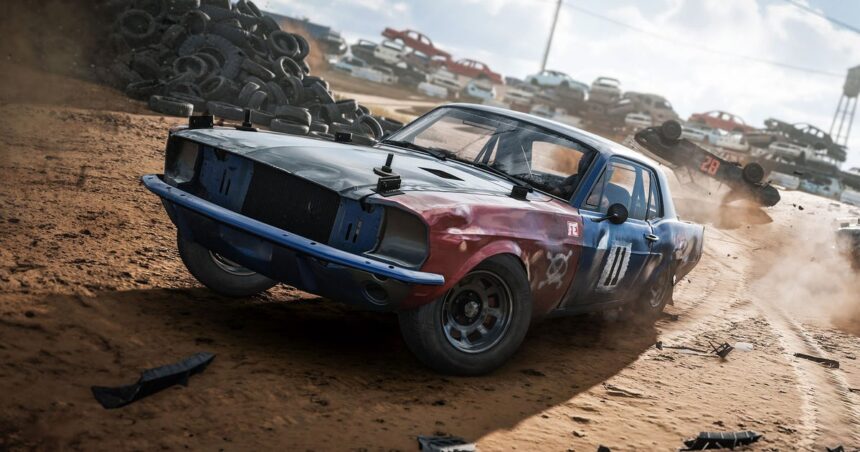For nearly seven years, Wreckfest has established itself as a standout racing game, known for its ambitious approach to soft-body physics simulations. This year, the highly anticipated sequel has finally launched in early access on PC. While Wreckfest 2 is still evolving, it makes a compelling argument for being not only a worthy successor but also a showcase of the most sophisticated real-time physics the genre has to offer.
Currently, this early access edition is exclusive to PC, with hopes for a console release once the game fully launches. This version features a limited selection of tracks, supporting both online and offline racing. As with the original, Bugbear Entertainment, renowned for Ridge Racer Unbounded, is at the helm of development.
The heartbeat of Wreckfest 2 is its newly developed physics engine, a complete overhaul designed to leverage contemporary hardware, utilizing Bugbear’s proprietary ROMU engine. This system offers a fully dynamic simulation that operates in real time across various vehicles, debris, and environmental elements. At present, up to 24 cars can compete in a single race, creating enough chaos to truly showcase what modern physics can accomplish.
Beginning a race from the back of the pack offers a stunning spectacle as the action unfolds. Observing everything from the vehicle’s suspension to the numerous objects populating the track brings a level of realism rarely witnessed in racing games. Damage is not just for show; panels bend and break depending on the angle and force of impact, and even minor collisions can have tangible mechanical effects that influence handling. This simulation does not rely on pre-computed outcomes—every interaction unfolds live as you race. When a rival driver collides with you, the result is a dynamic mix of materials and damage; paint scrapes off, revealing the metal beneath, while parts shatter in response to external stresses.
What sets this game apart? It’s the component-based design approach. Every vehicle is constructed from individual parts—body panels, the drivetrain, and more—all modeled with distinct properties. The game simulates these material-specific characteristics: glass, plastic, and steel each have their own levels of strength and flexibility. Therefore, a collision isn’t merely a clash of two models; it’s a complex interaction of all the unique components that make up each car.
Furthermore, the driving mechanics emphasize the realistic mass of each vehicle. Tires deform, and chassis flex in a way that feels grounded during gameplay. Navigating a turn while taking out a competitor is exhilarating. The damage system is so nuanced that players can see individual parts getting wrecked reported in a corner display, which directly affects handling—encouraging you to adapt your racing strategy.
The current iteration also includes a physics playground filled with quirky elements such as crushers, loops, and ramps that invite players to test the damage model creatively.
On the track, enhancements in visual fidelity are evident. The environments are teeming with debris and physics-driven objects like tires and scrap parts that interact with players in real time. Watching a swarm of 24 cars barrel through a garage is always a thrill.
The graphical quality represents a significant leap forward compared to its predecessor, featuring tracks with exceptional detail and atmospheric effects, greatly enhancing realism. For example, the Savolax Sandpit track—shared between both titles—demonstrates how cars appear more integrated into the surroundings, thanks to improved ambient occlusion, lighting, and texturing. Each track is adorned with unique objects, giving them distinct personalities.
Bugbear’s choice to stick with its own technology rather than migrating to Unreal Engine, as many developers have done, adds a unique flair to the visuals that I appreciate. Additionally, gamers will find some less common options, like MSAA for anti-aliasing, along with the more standard FSR3 support (though DLSS is not implemented yet).
Turning attention to audio, while this early build lacks music, there’s an evident effort to create a well-balanced soundscape where every event on the track has its own aural identity—a perfect complement to the advanced physics at play.
Since this is an early access release, performance metrics are not fully established yet. I tested the game on a high-end RTX 5090 setup, achieving a smooth 4K at 120fps with all settings maxed out, but how it will perform on more modest systems remains to be seen. Given that it will eventually run on consoles, Bugbear is actively optimizing the damage modeling to ensure it operates quickly and effectively across platforms, as discussed in their latest blog update.
There’s a lot to be excited about, and it’s refreshing to see Bugbear’s ambitious push to redefine driving and destruction mechanics. We’ll keep you updated on Wreckfest 2 as it evolves, aiming to provide a comprehensive review upon its full release. Current financial forecasts suggest that publisher THQ Nordic is targeting a launch by March 2026.























